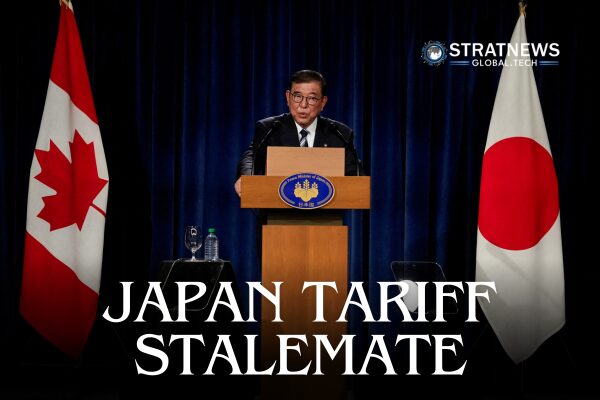Diplomatic Outreach of Japan Falls Short
Prime Minister of Japan, Shigeru Ishiba’s attempt to secure relief from US tariffs ended without success this week. His direct appeal to President Donald Trump during the G7 summit in Canada failed to shift Washington’s stance. This result has highlighted deepening differences between the two allies, with further tariffs set to take effect soon.
Ishiba attended the summit hoping to restart stalled talks on a steep 25% tariff imposed on Japanese car imports. According to officials familiar with the discussions, Japanese negotiators had already faced difficulties persuading the US to ease trade restrictions.
Although the meeting between Ishiba and Trump occurred under sunny skies in the Canadian Rockies, the brief exchange produced no breakthrough. The Japanese auto sector now faces the reality of broader 24% tariffs scheduled to begin on July 9.
This setback could damage Ishiba’s image just weeks before a critical upper house election. Some analysts warn that continued failure on the trade front may even cost him his job.
Car Industry Feels the Pressure
Japan’s auto industry is at the heart of its economy. It employs around 10% of the workforce and accounts for 20% of exports. Recent trade policies have taken a toll. Toyota reported a ¥180 billion ($1.2 billion) profit hit for just April and May. Honda expects losses of up to ¥650 billion ($4.5 billion) for the year. Mazda has held back its forecast, citing tariff uncertainty.
Japan had sought complete exemption from the auto tariffs. However, sources said negotiators were prepared to settle for a reduced 10% levy, similar to terms offered in a US-UK trade deal. Japan even pledged to boost imports of US natural gas and other goods to help balance the trade gap.
Still, by the time Ishiba arrived at the summit, US officials had signalled their unwillingness to make concessions. Trump appeared firm, stating that the US would simply notify trade partners of the costs and leave the choice to them.
Political Repercussions Loom
Experts suggest Ishiba misjudged his chances of reaching an agreement. According to insiders, his next focus of Japan must be gaining more time before the wider tariffs kick in. If not, the economic strain could further erode public confidence ahead of next month’s election.
Mizuho Research & Technologies estimates that the tariffs could cut nearly 1% from Japan’s GDP. Analysts believe this could shake Ishiba’s ruling coalition, which already suffered losses in last October’s lower house vote.
Hosei University’s Hiroshi Shiratori warned that the summit’s failure might cast doubt on Ishiba’s diplomatic ability. If the coalition loses its upper house majority, the ruling party may look for new leadership. Political analyst Michael Cucek noted that losing two major elections could seal Ishiba’s fate.
Nonetheless, Ishiba may get another opportunity to engage Trump at the upcoming NATO summit in The Hague, starting June 24.
with inputs from Reuters


